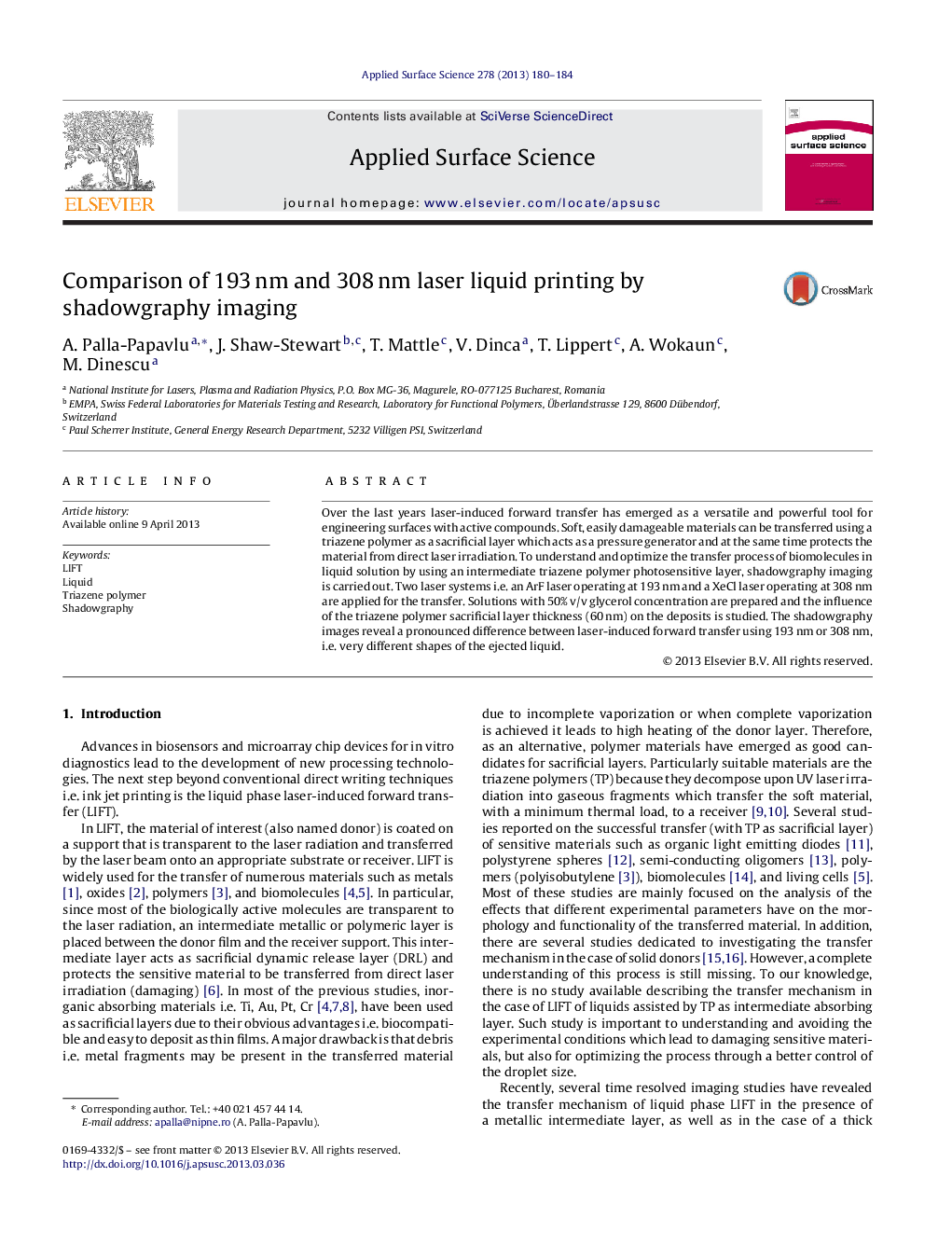| Article ID | Journal | Published Year | Pages | File Type |
|---|---|---|---|---|
| 5353272 | Applied Surface Science | 2013 | 5 Pages |
Abstract
Over the last years laser-induced forward transfer has emerged as a versatile and powerful tool for engineering surfaces with active compounds. Soft, easily damageable materials can be transferred using a triazene polymer as a sacrificial layer which acts as a pressure generator and at the same time protects the material from direct laser irradiation. To understand and optimize the transfer process of biomolecules in liquid solution by using an intermediate triazene polymer photosensitive layer, shadowgraphy imaging is carried out. Two laser systems i.e. an ArF laser operating at 193Â nm and a XeCl laser operating at 308Â nm are applied for the transfer. Solutions with 50% v/v glycerol concentration are prepared and the influence of the triazene polymer sacrificial layer thickness (60Â nm) on the deposits is studied. The shadowgraphy images reveal a pronounced difference between laser-induced forward transfer using 193Â nm or 308Â nm, i.e. very different shapes of the ejected liquid.
Keywords
Related Topics
Physical Sciences and Engineering
Chemistry
Physical and Theoretical Chemistry
Authors
A. Palla-Papavlu, J. Shaw-Stewart, T. Mattle, V. Dinca, T. Lippert, A. Wokaun, M. Dinescu,
